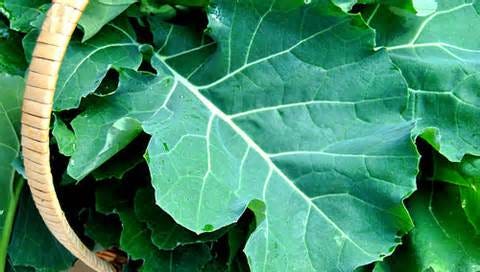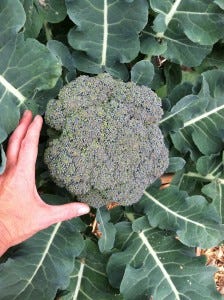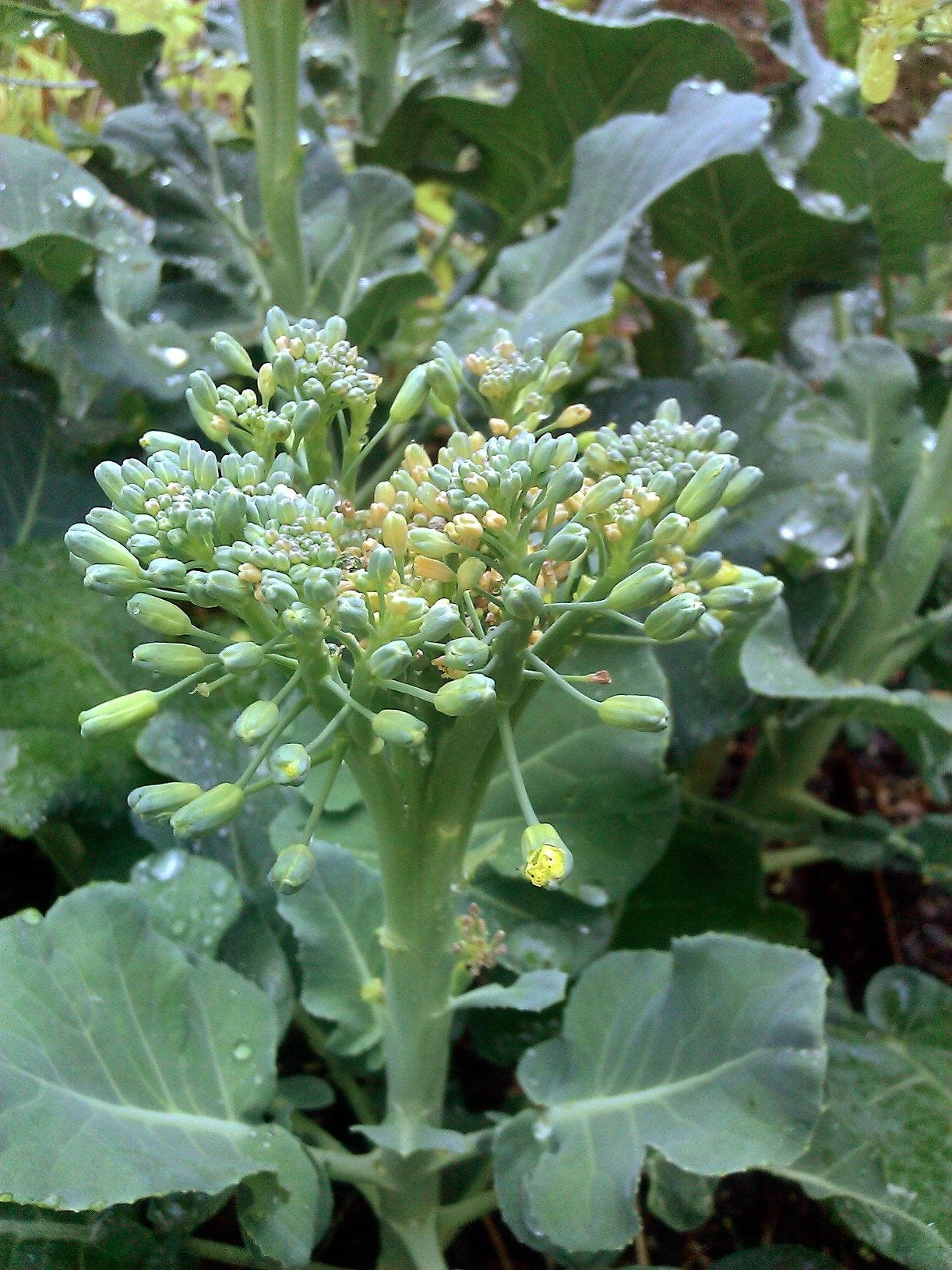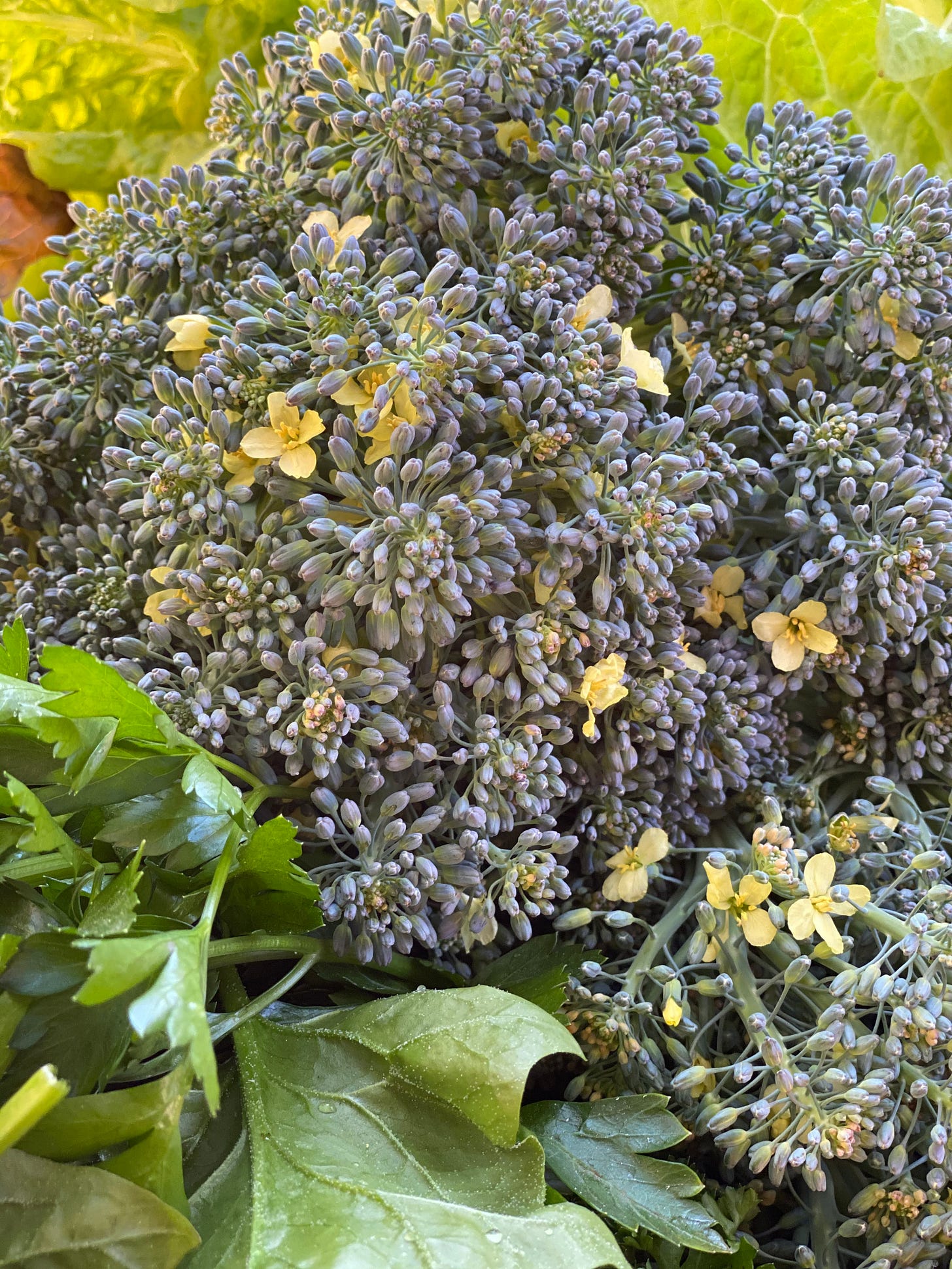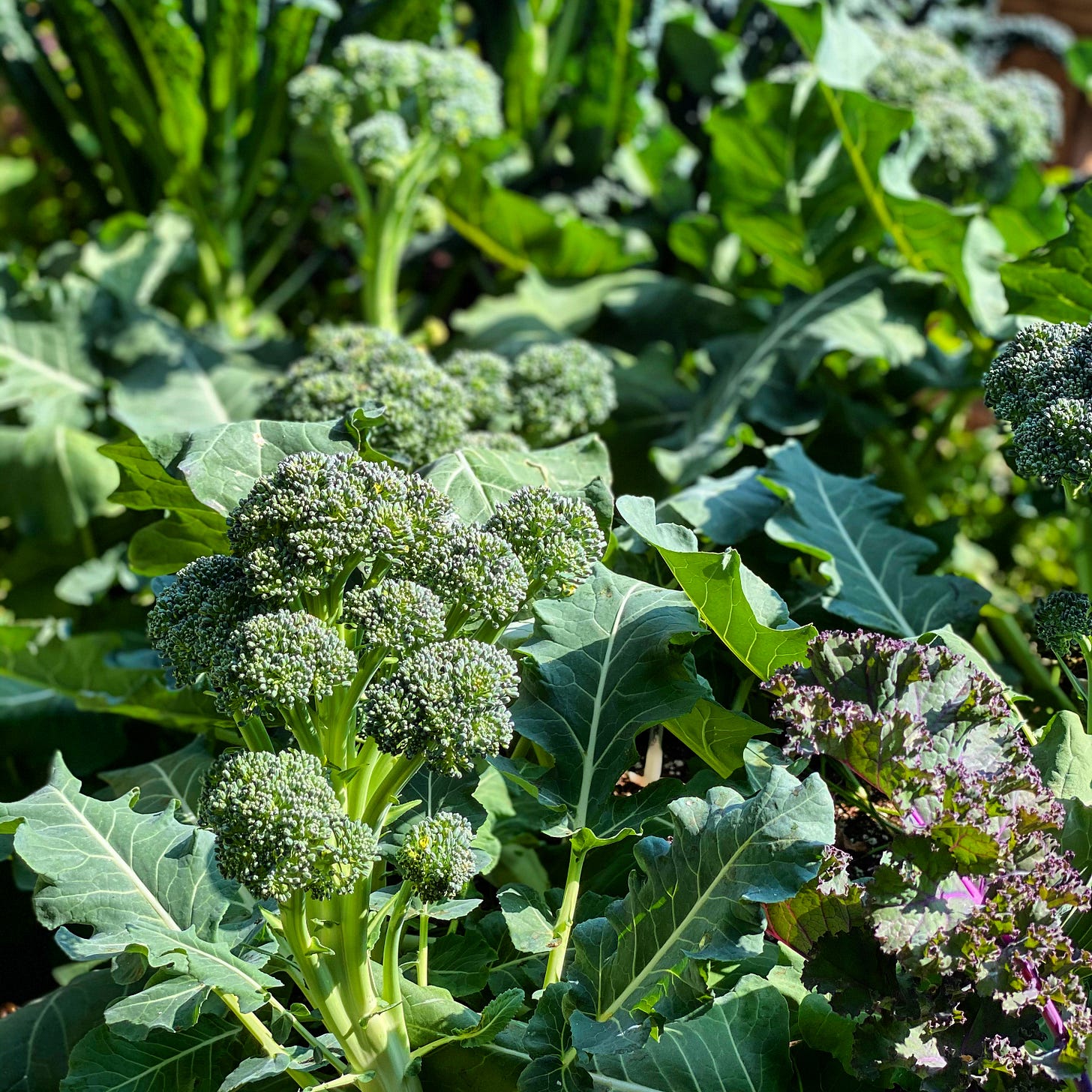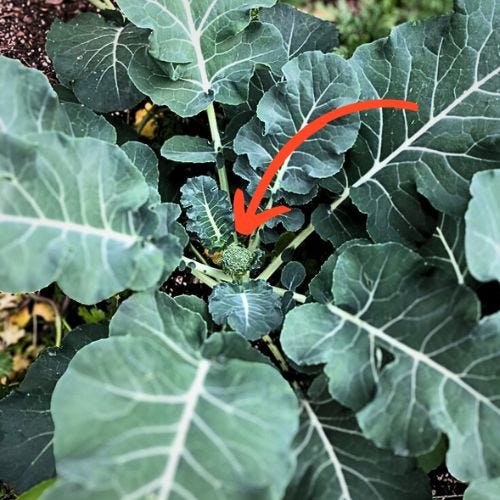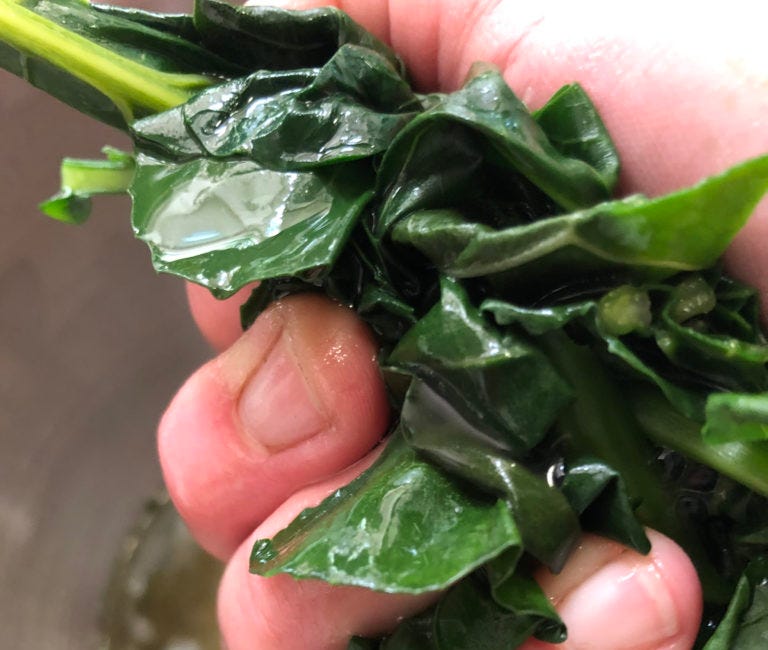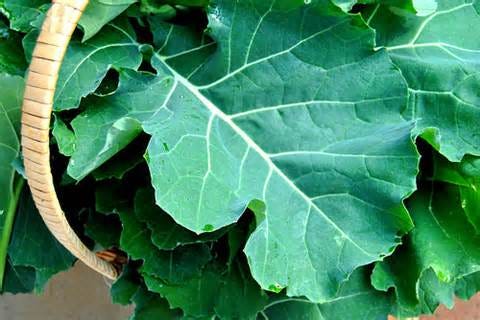When you have limited space in your home vegetable garden, you have to make some tough choices about what to grow. And let’s be honest - almost any amount of space that you have for a home vegetable garden is automatically NOT ENOUGH SPACE.
So we all have to be grown-ups about what we can reasonably fit in our garden. Let me make the case for broccoli.
Broccoli may not initially seem like the best plant for the home garden. First, it’s notoriously hated by children. Moms are stumped on that one, but maybe it’s because of its bitterness, bad smell and weird texture. We are eating a head of green stunted flowers, but who knows.
One thing I do know…this particular brassica doesn’t last long in the fridge.
And broccoli isn’t the most productive plant in the garden. You’ll wait and wait to get that one decent-sized broccoli head.
Behold!
Sure, harvesting the main head can yield you a few smaller side heads, but in terms of broccoli florets, a single broccoli plant isn’t exactly “plenteous.”
In addition, growing your bougie broccoli will require a conciliatory attitude. Not to mention ample water, a substantial amount of nutrition and a richness of soil. Broccs are prone to some of the most God-awful aphid infestations you’ll ever see. And they sing a siren song the cabbage worm cannot ignore. When young and vulnerable, broccoli plants are also a favorite of squirrels and fruit rats who will eat it off at the base like it was never there.
Still with me, reader?
There’s also the issue of what happens when you choose to leave the broccoli unguarded and it slowly erupts into yellow flowers.
Did you know that a broccoli head is a bunch of immature flower buds? Now don’t run screaming. You CAN eat a slightly flowered broccoli.
Because just to confuse things, there’s a vegetable called spring broccoli aka broccolini aka sprouting broccoli aka the Italian turnip aka broccoli rabe aka broccoli raab aka Rapini, all of which are harvested for their leaves, skinny stalks and small almost always flowering heads.
Weirdos.
But for Brassica oleracea var. italica, it’s not the same vegetable once it succumbs to full flower.
After reading all this, broccoli may not seem worth it. I mean the PR is not good, especially when I’m the one writing it!
However, if you take into account that the beautiful and nutritious broccoli is more than just the head, you may have another opinion. Let’s not give up on broccoli quite yet, ya cynical Cindy. I can clean up this mess.
Broccoli is famously nutritious. Broccoli is the OG and it preceded kale in the public eye for its high levels of cancer-fighting elements, like phytonutrients.
Phytonutrients are natural chemicals found in vegetables. They are not vitamins or minerals but rather natural chemicals that help promote immunity and prevent disease. In broccoli, there are some phytonutrients in the plant called glucosinolates that when chewed, and even more so when lightly steamed with bit of fat, may prevent the growth of cancer. Broccoli also contains indole-3-carbinol, a phytochemical that suppresses estrogen-sensitive cancers and carotenoids, including beta-carotene, lutein and zeaxanthin. These are all potent antioxidants that as you may know prevent diseases of the eye. Now here’s the exciting news for home gardeners – there are even more phytonutrients in the leaves of broccoli than in the head and stalk!
This is what makes the marriage work - this entire broccoli plant is edible. Once the broccoli leaves reach 4 to 6 inches long, you can start to harvest a few leaves each week. You do want to leave some leaves to provide energy to the plant.
Once the plant is finished producing heads…or flowers…you can harvest and eat the entire plant. Now THAT’S a plant worth growing and eating.
So now you know broccoli leaves are nutritious, let’s see how to make them delicious! Broccoli leaves are a tough green like kale, cabbage and collards so you can use them anywhere you would use these greens. Blanch them and roll up with rice and tofu, sautee them in stir-fries…you can also juice your broccoli stalks. Because that broccoli stalk is gram for gram the healthiest part of the broccoli.
Let’s take a virtual stroll in my garden…
Truth be told, this broccoli plant was planted a little very late in the season and it was in too much shade and so…this is the situation. We got a full grown broccoli plant at the end of the season, with tomato real estate needed right now, and they haven’t even made a head yet? Wait. Did it?
Don’t laugh! He’s adorable and tiny and I love him. But truth be told this brassica never really got motoring in the floret department and since the spring countdown is upon me, there’s no time to waste. It is Garden Eviction Day. Gonna sit their little trellises and stretch tape out on the corner.
Just kidding. We’re not like that. But it is time for them to go. Unfortunately, the stalk of this broccoli was too woody to juice. Still, there’s still a lot to love here. Let’s get into it.
Broccoli leaves are high in fiber, Vitamin A, Thiamin, Niacin, Pantothenic Acid, Calcium, Iron, Selenium, Vitamin C, Riboflavin, Folate, and Potassium to name a few. They are fantastic in any setting you would use a green: rolling a filling, layering a lasagne and in all kinds of sautees, side dishes, sauces, soups…even smoothies!
When it is time to take all the winter greens out of the garden, it can be an overwhelming amount of work “bounty.” See my next newsletter on
The Answer is Blanching
Cooking greens are mostly associated with the succulent leaves of brassicas which as a plant originated way back in ye olde prehistoric times. And our broccoli, brussels, kale, mustard, cauliflower, cabbage, turnips and maybe burping in general, descends from one giant black mustard plant in the sky. All hail black mustard!
blanching for an easy way to cook and store your excess greens.
GARDENING TIPS
Broccoli will grow easily from seed. But if you’re a novice or a little late to plant, go for the seedling. Broccoli likes chilly weather so make sure the nights are cool when you put out broccoli. Cover if the days get too warm.
Broccoli does well in containers but keep them well-watered. Drought-conditions can make the broccoli bolt prematurely. Aphids are a big problem so examine your seedlings daily and manually remove aphids with your finger or the hose. Covering broccoli plants with a row cover also keeps cabbage worms at bay (the little moths can’t access the leaves to lay their eggs).
But check under that cover all the time I tell you! Aphids will take advantage of any gardener negligence. And veganic gardeners have to be proactive to limit using poisonous and deadly pest interventions. The key to veganic gardening is to garden in such a way that causes the least harm. I think this is what organics was supposed to be, but that certainly isn’t true now.
Let’s turn that frown upside down because this new movement is really exciting. Because we have other tools than pesticides. We can work with nature, rather than acting like the Lord of Nature!
Plant trap plants like nasturtium, chive and onion to draw aphids away from brassicas. Encourage insects like ladybugs and lacewings that keep aphid numbers under control. Make yourself familiar with their life cycles so you don’t accidentally dislodge eggs or larvae. Lacewings love yarrow, dill and fennel so include those near your broccoli. You may also consider marigold, cosmos, calendula and alyssum.
And use veganic fertilizers that are naturally not too high in nitrogen. Studies have found that broccoli that gets too much nitrogen can ATTRACT aphids! Gah!
That being said, broccolis are heavy feeders. Start off with a fertilizer a little higher in nitrogen, pottasium for flowering, and I like a little calcium too. Plant with plenty of compost and castings. Fertilize through the season with a liquid fertilizer or botanical tea.
Broccoli gets surprisingly large. Give them 3 feet across. Broccoli can get top heavy so don’t get weird about giving them a support. Tying the stalk to a sturdy stake is a good choice and can even be done preemptively. Cut your heads off early if you want to ensure they don’t flower on ya. That will get those side shoots going all the sooner.
Now get out there and enjoy those edible, nutritious, versatile and delicious broccoli leaves!

